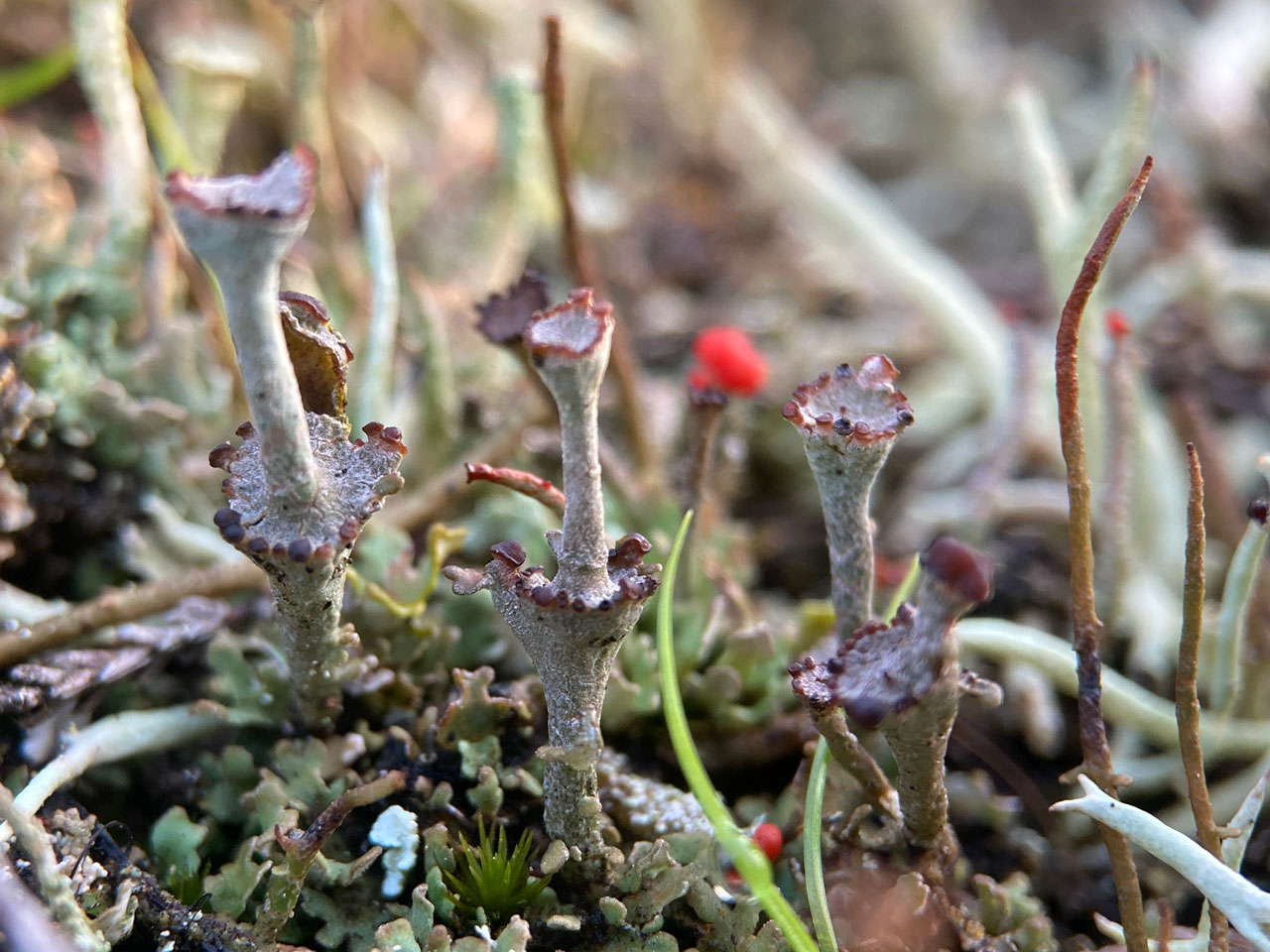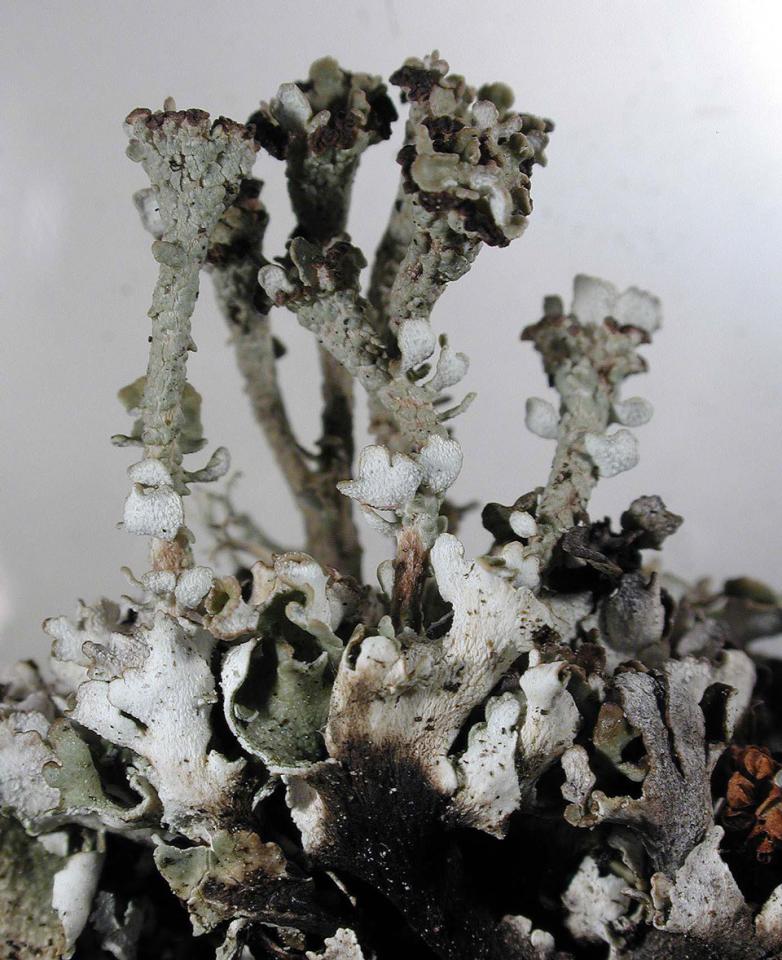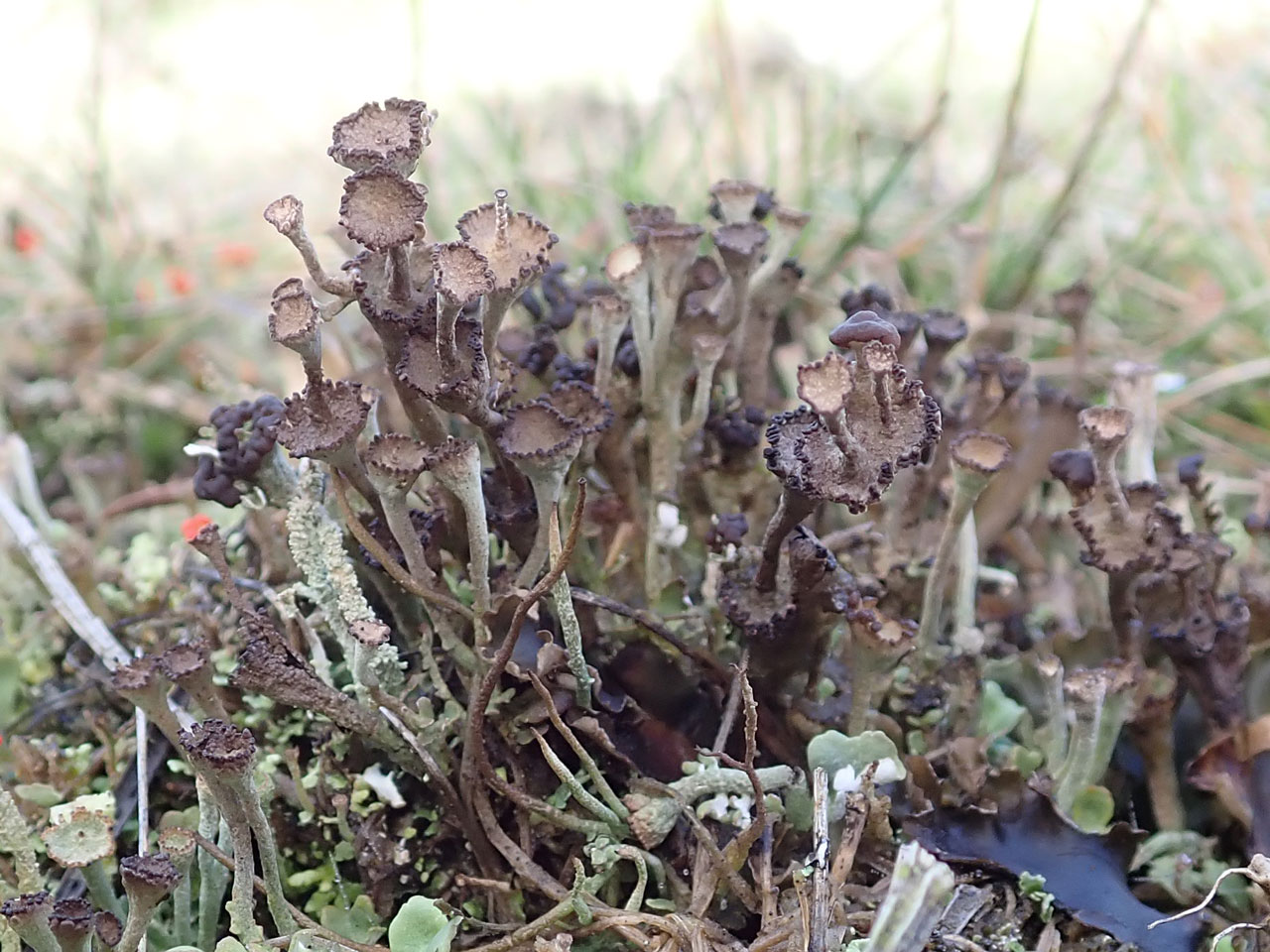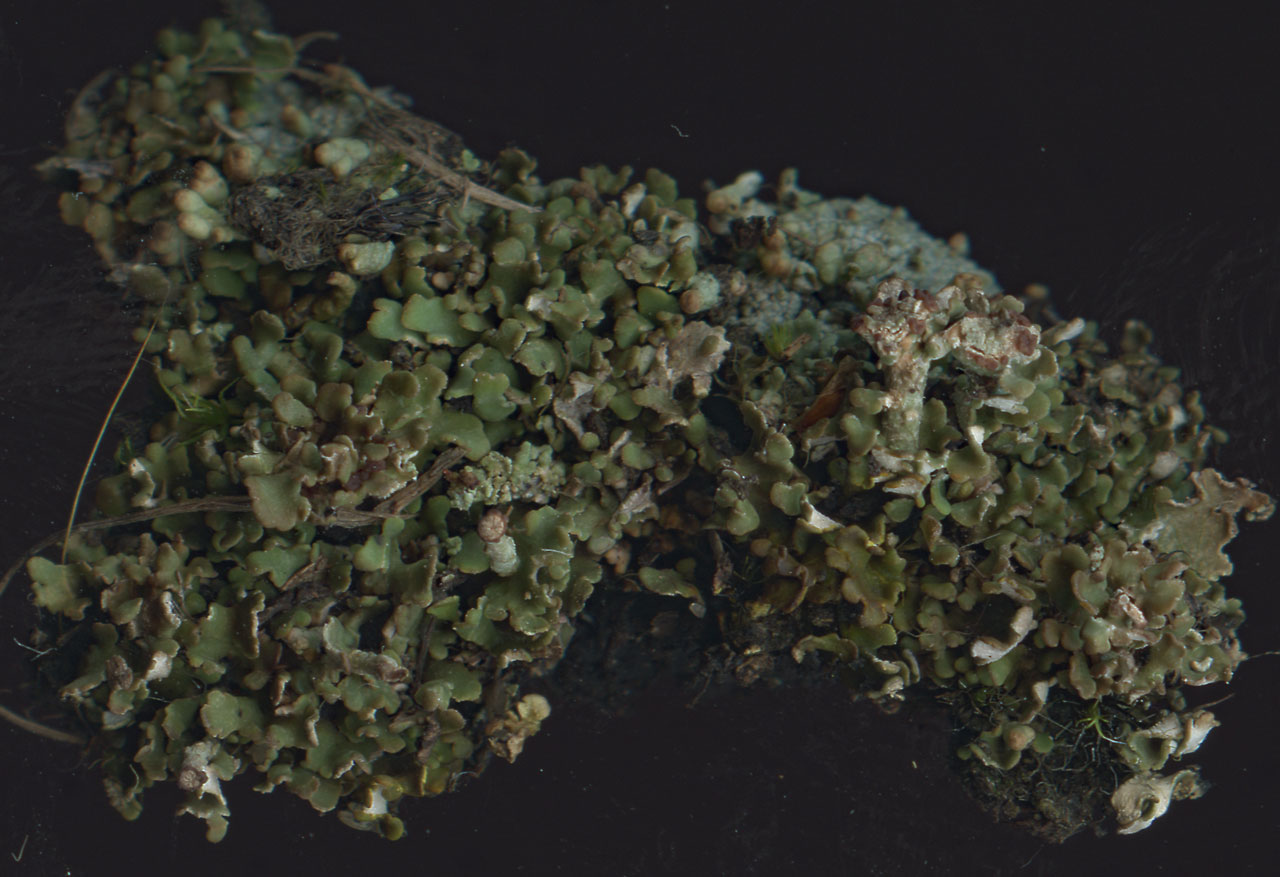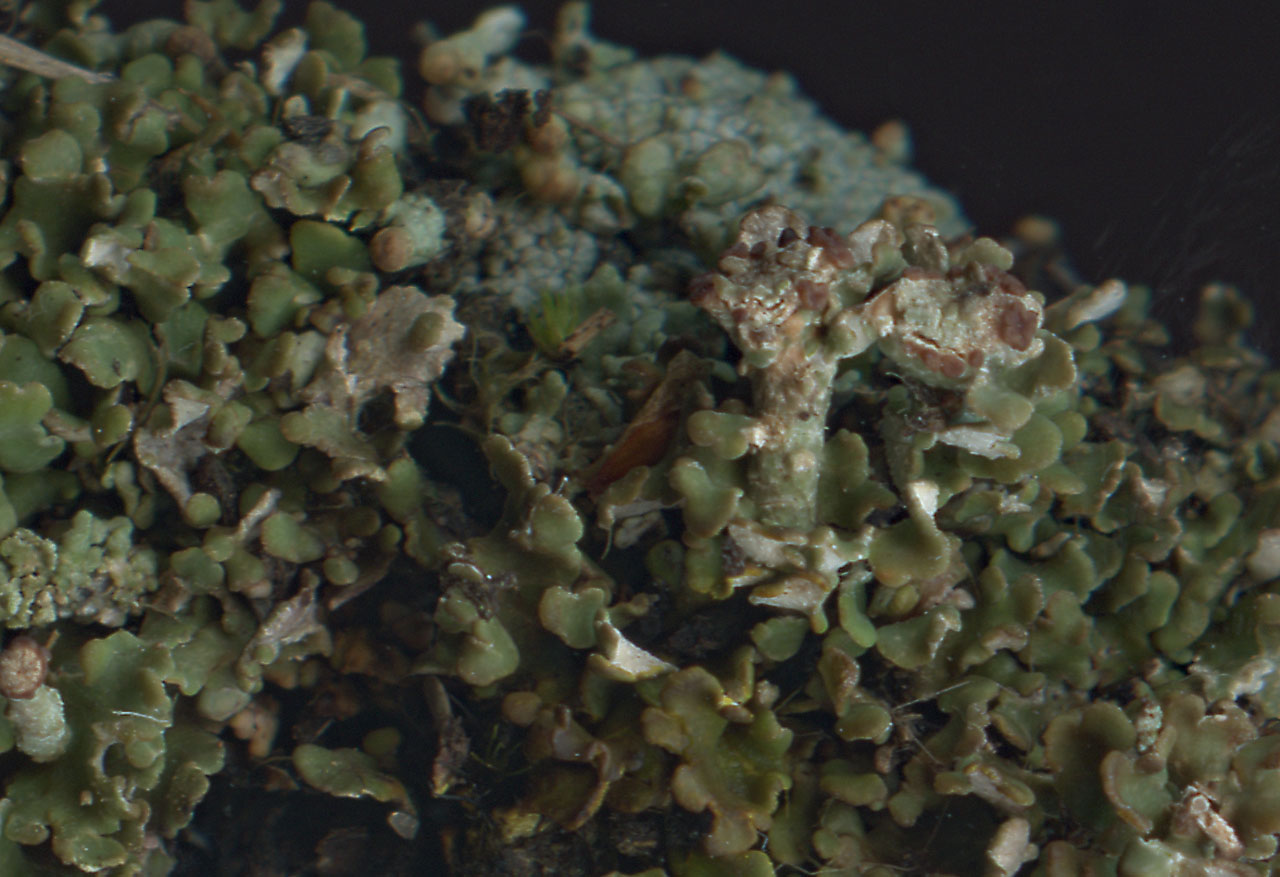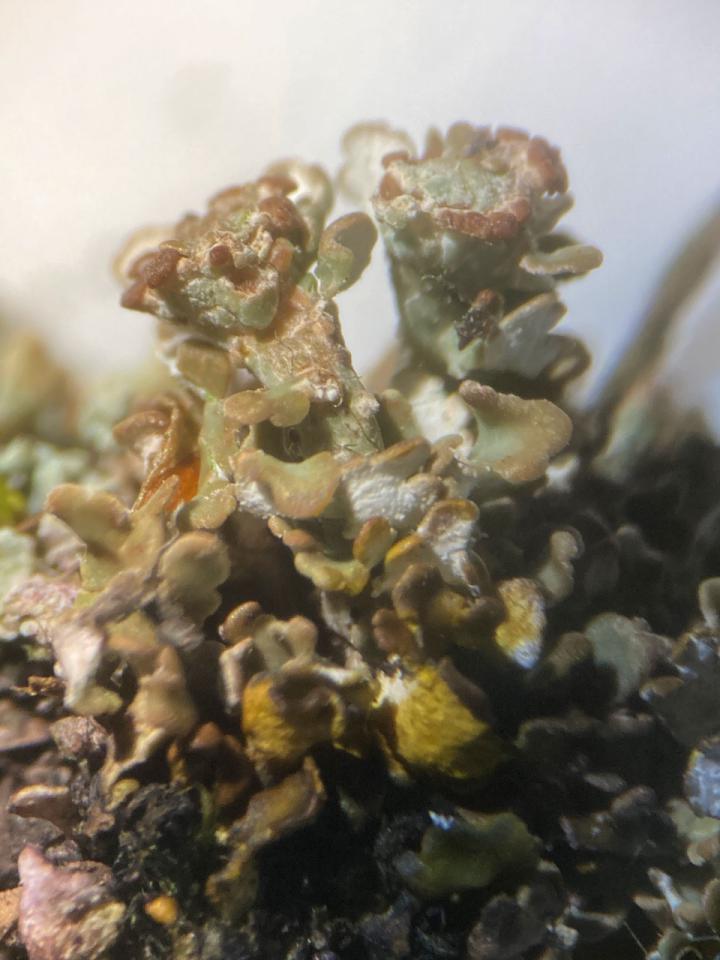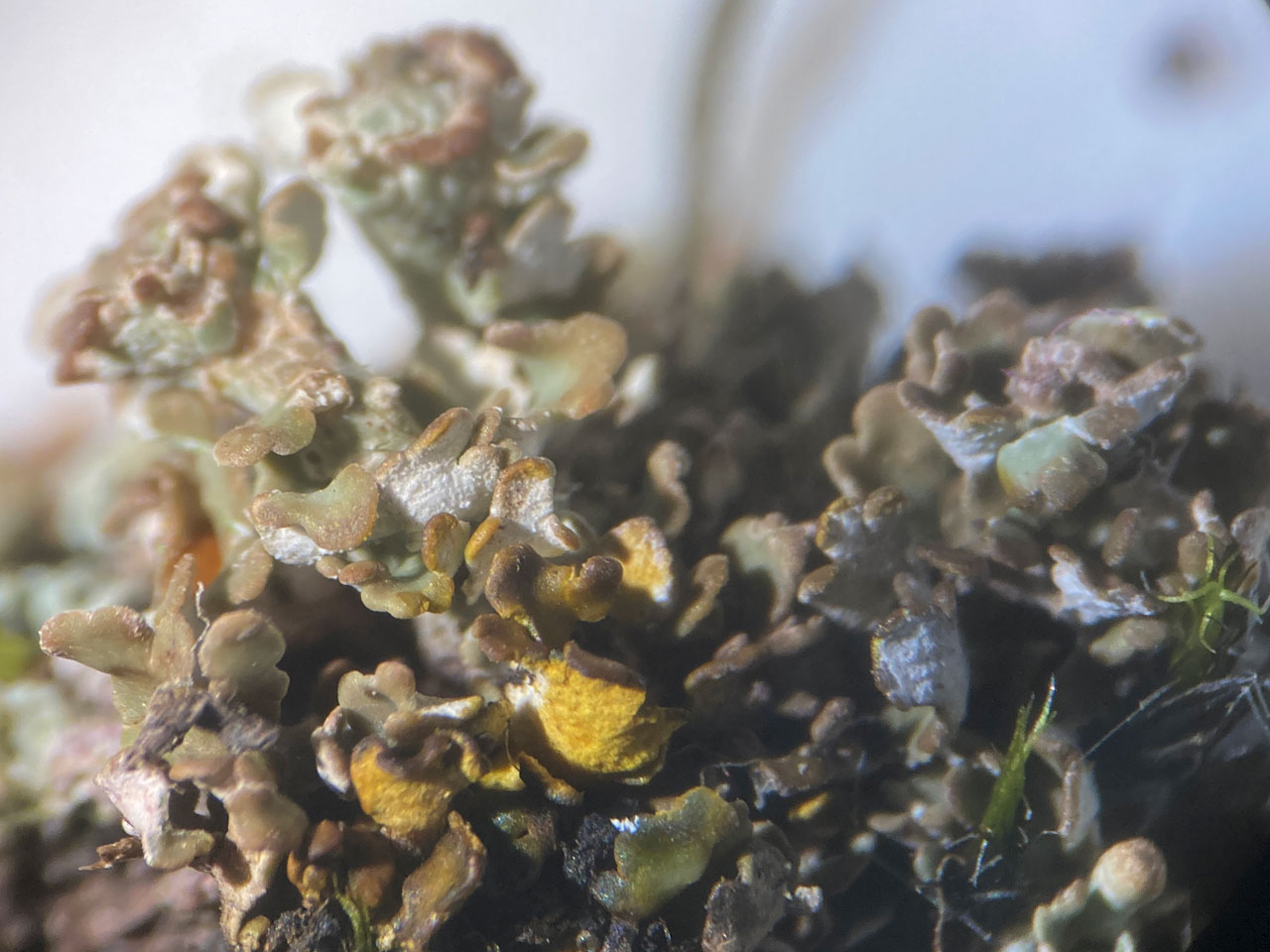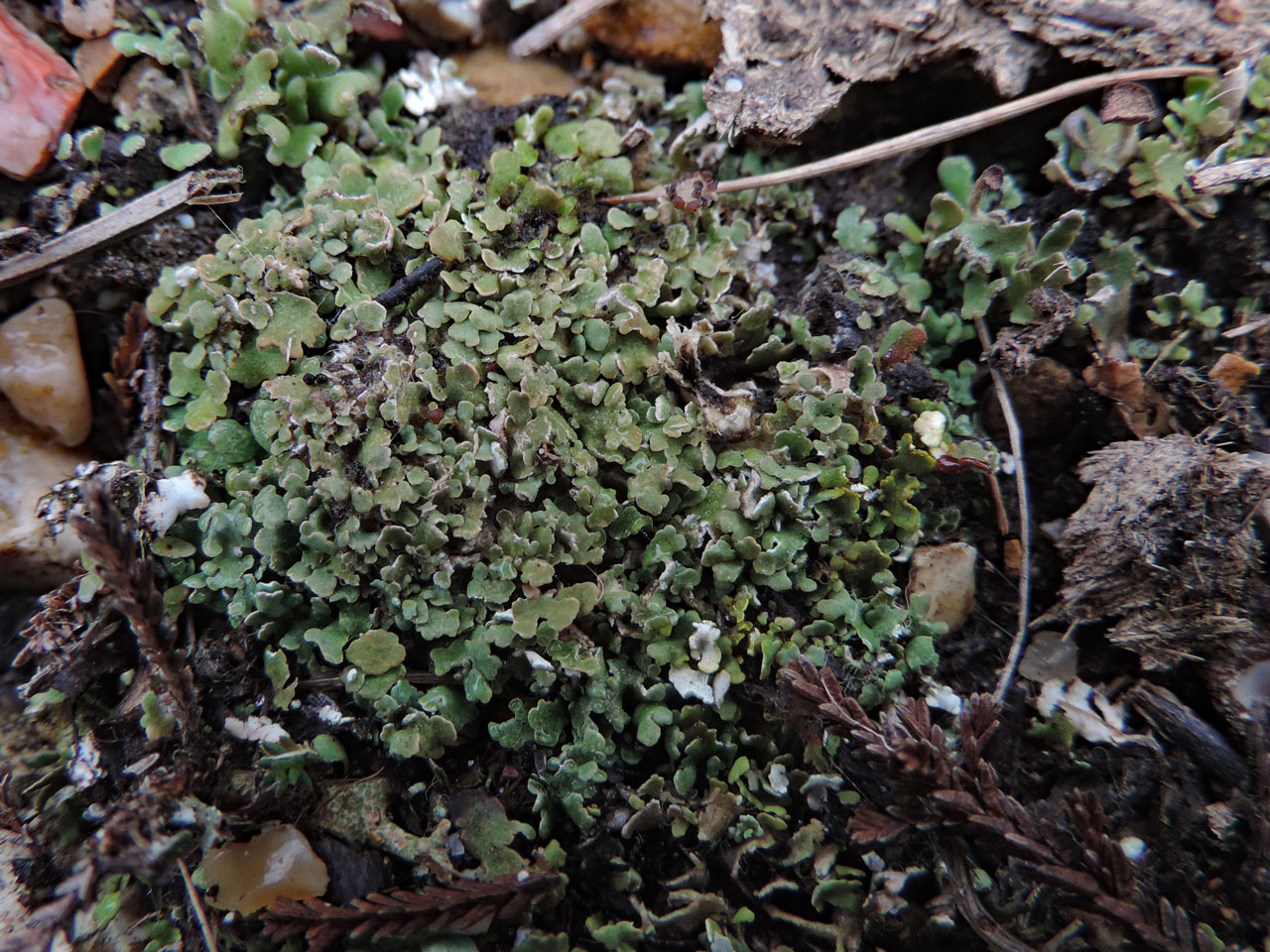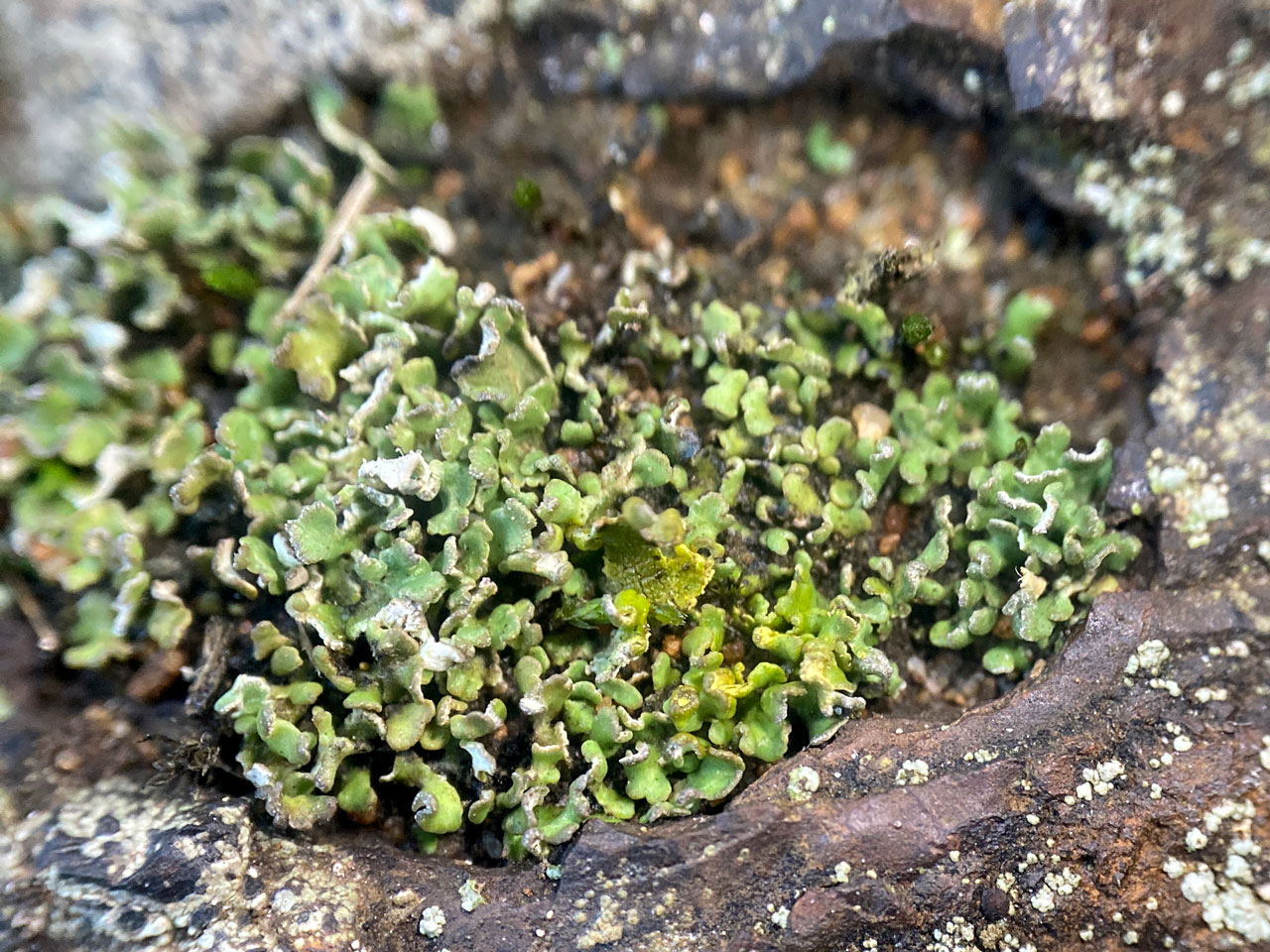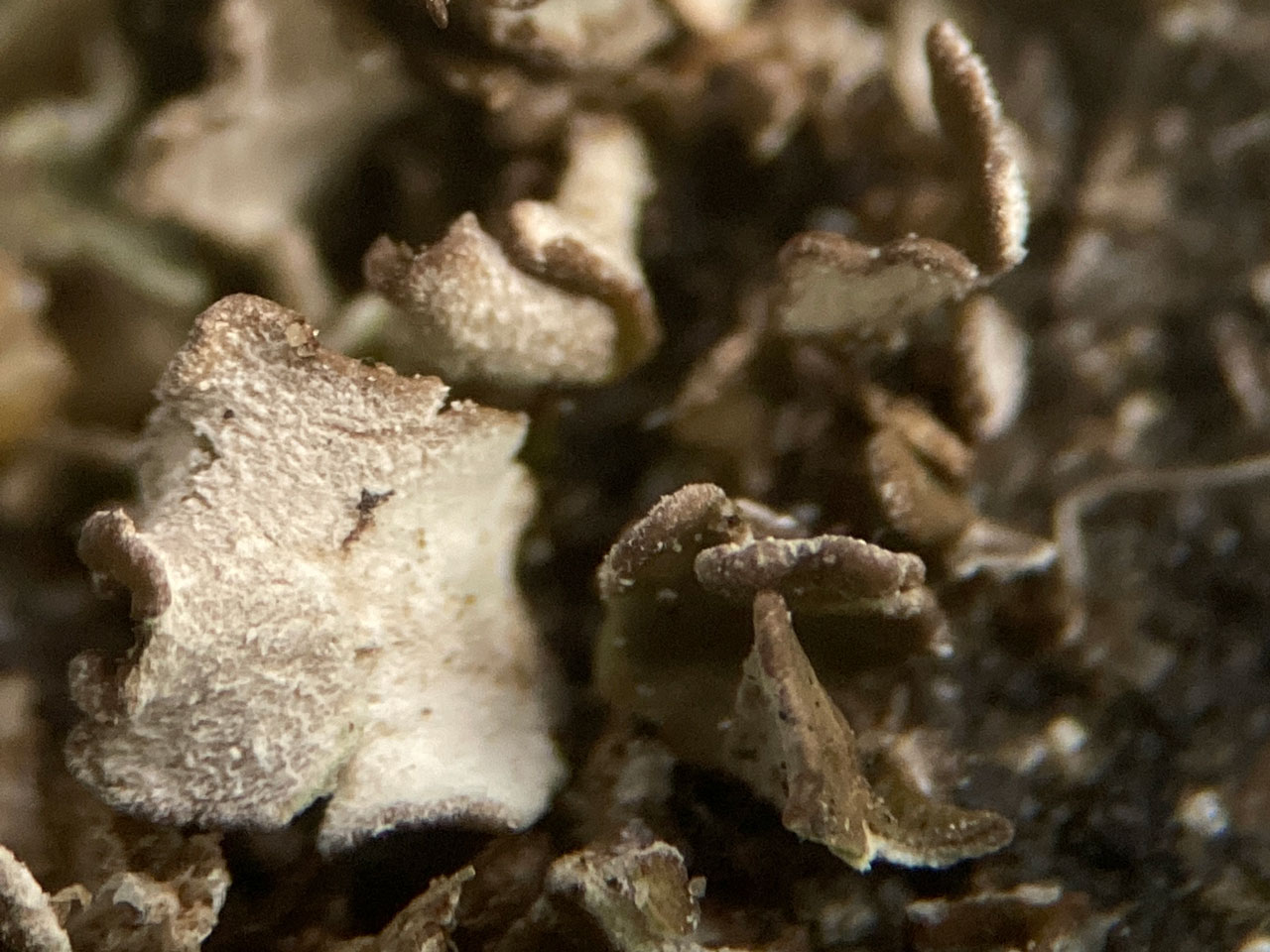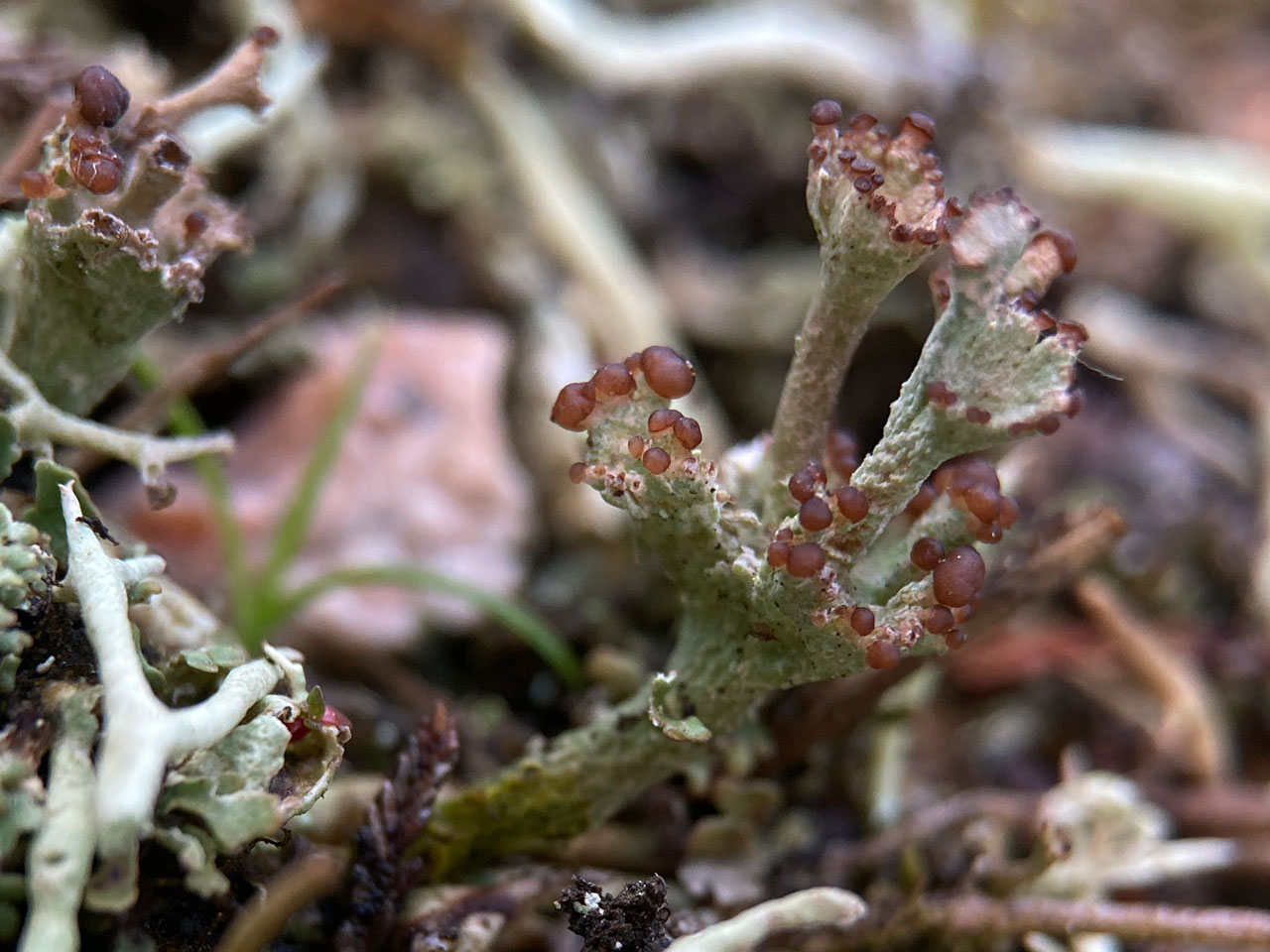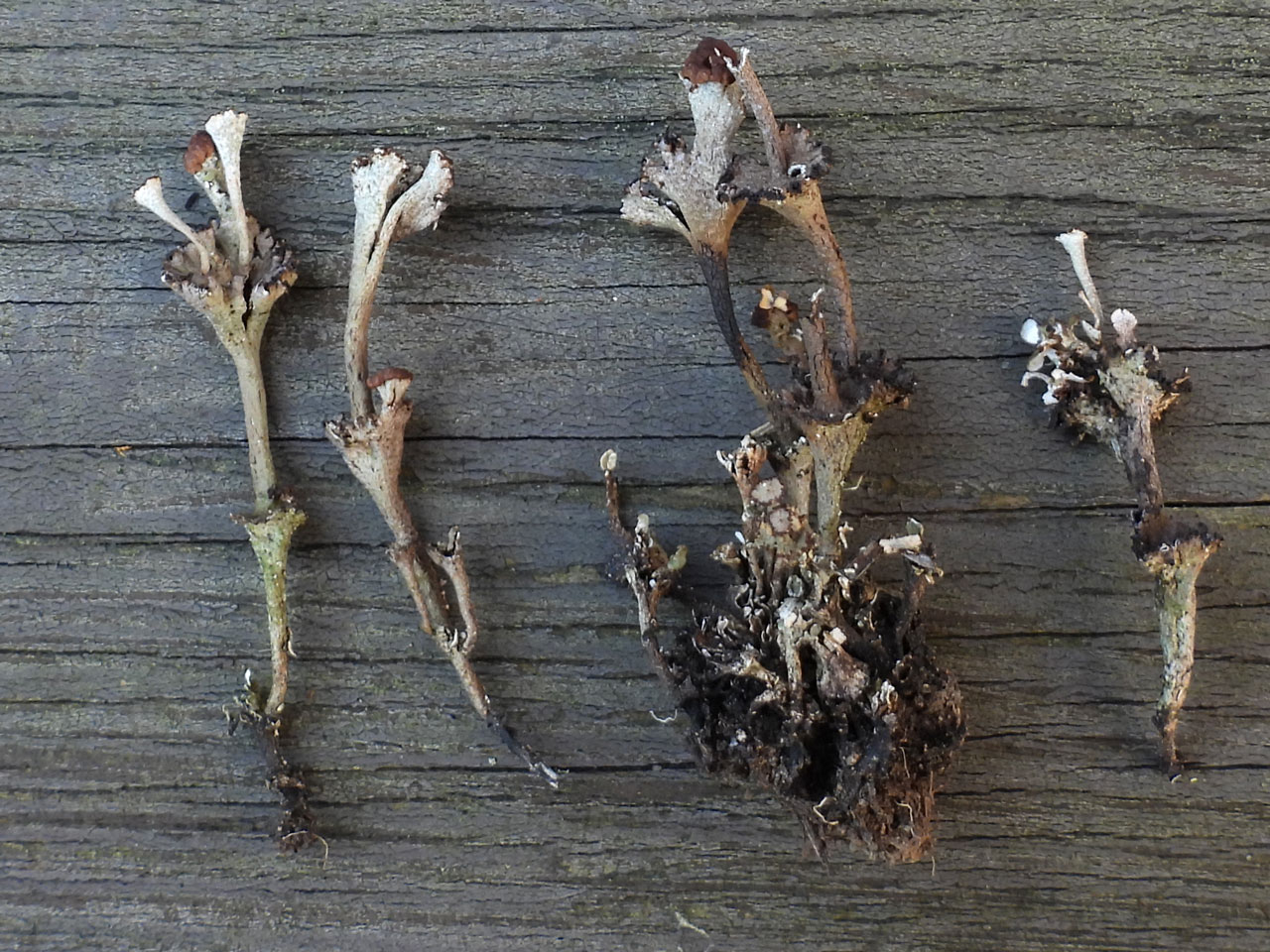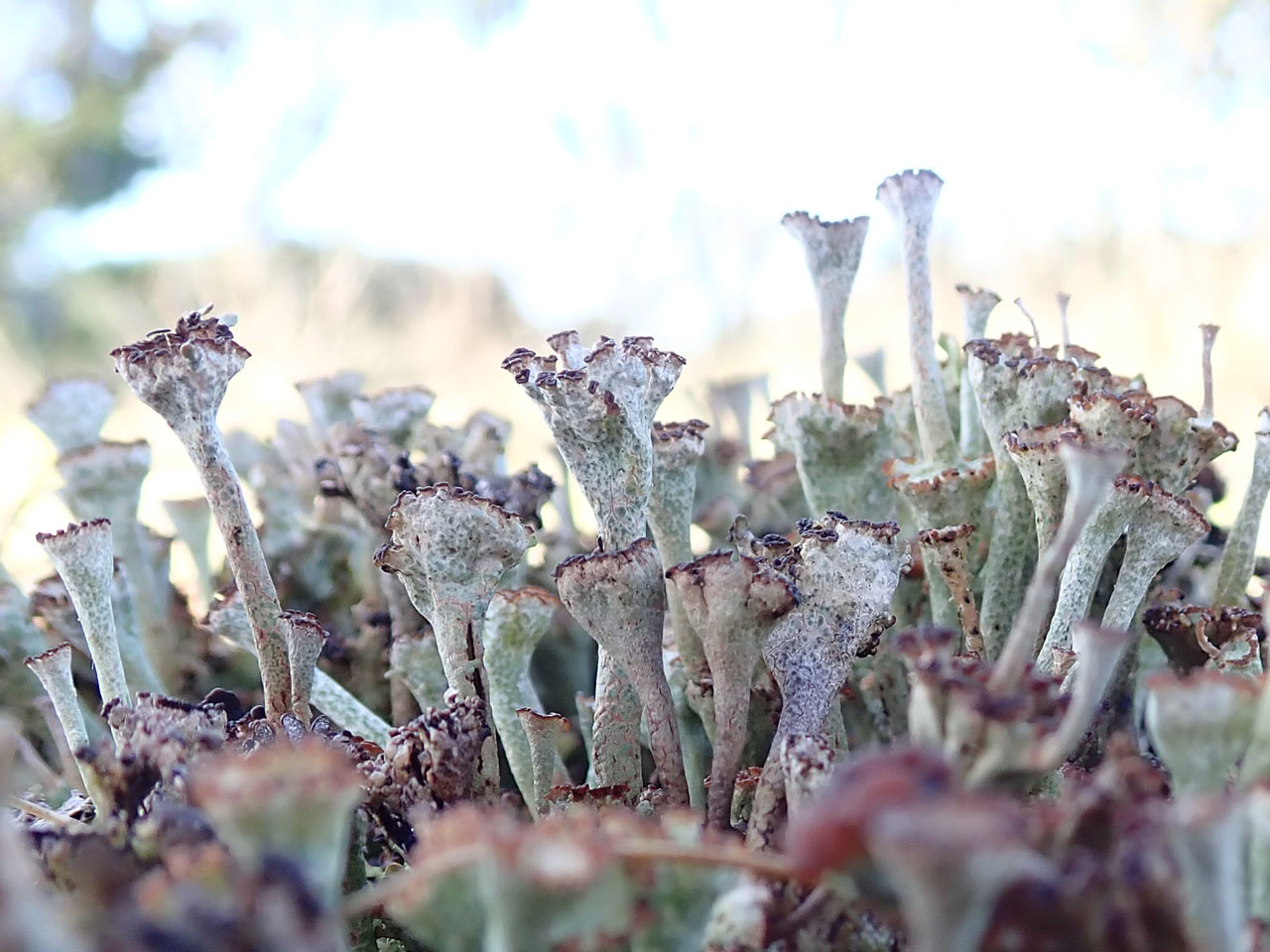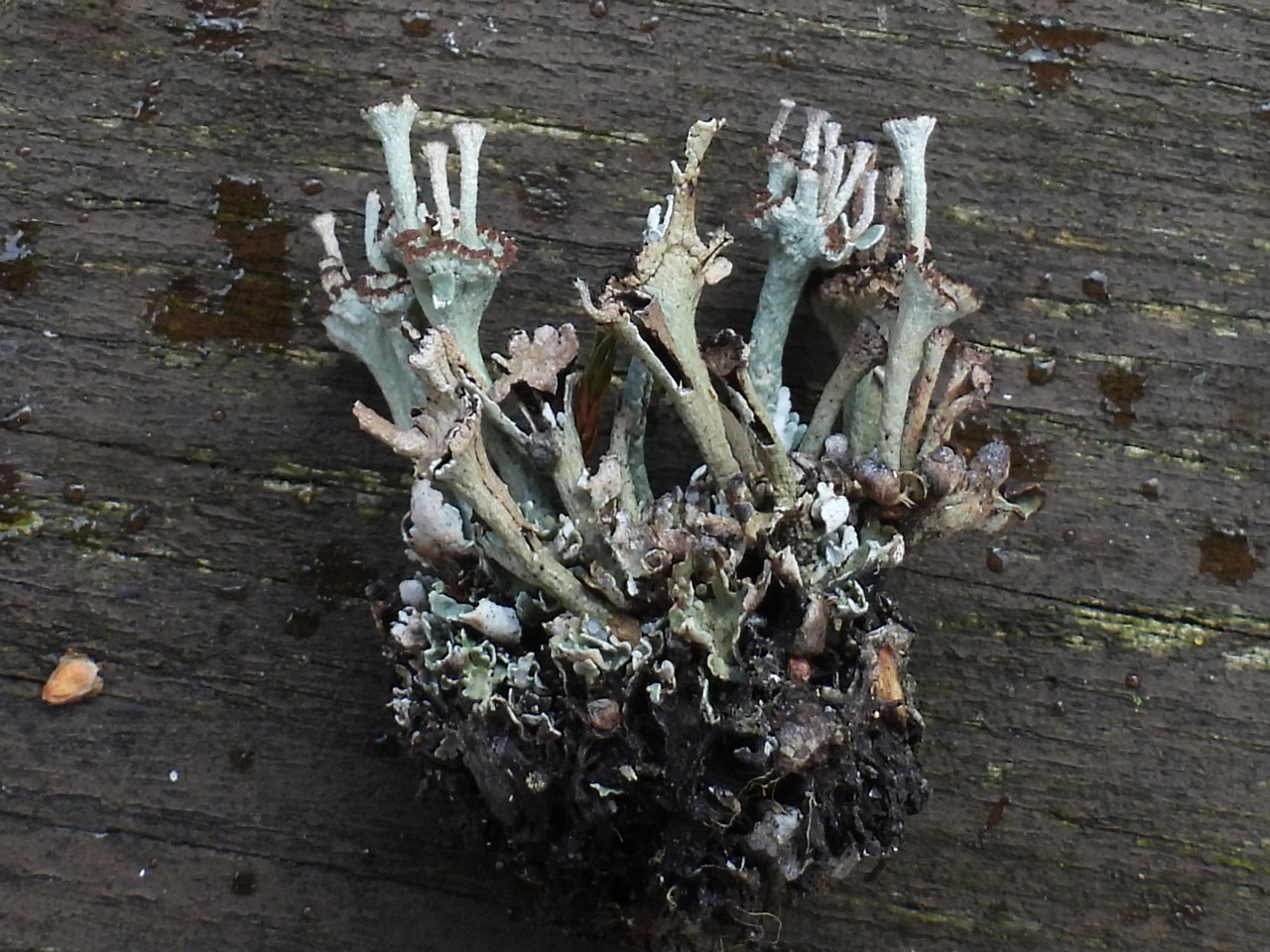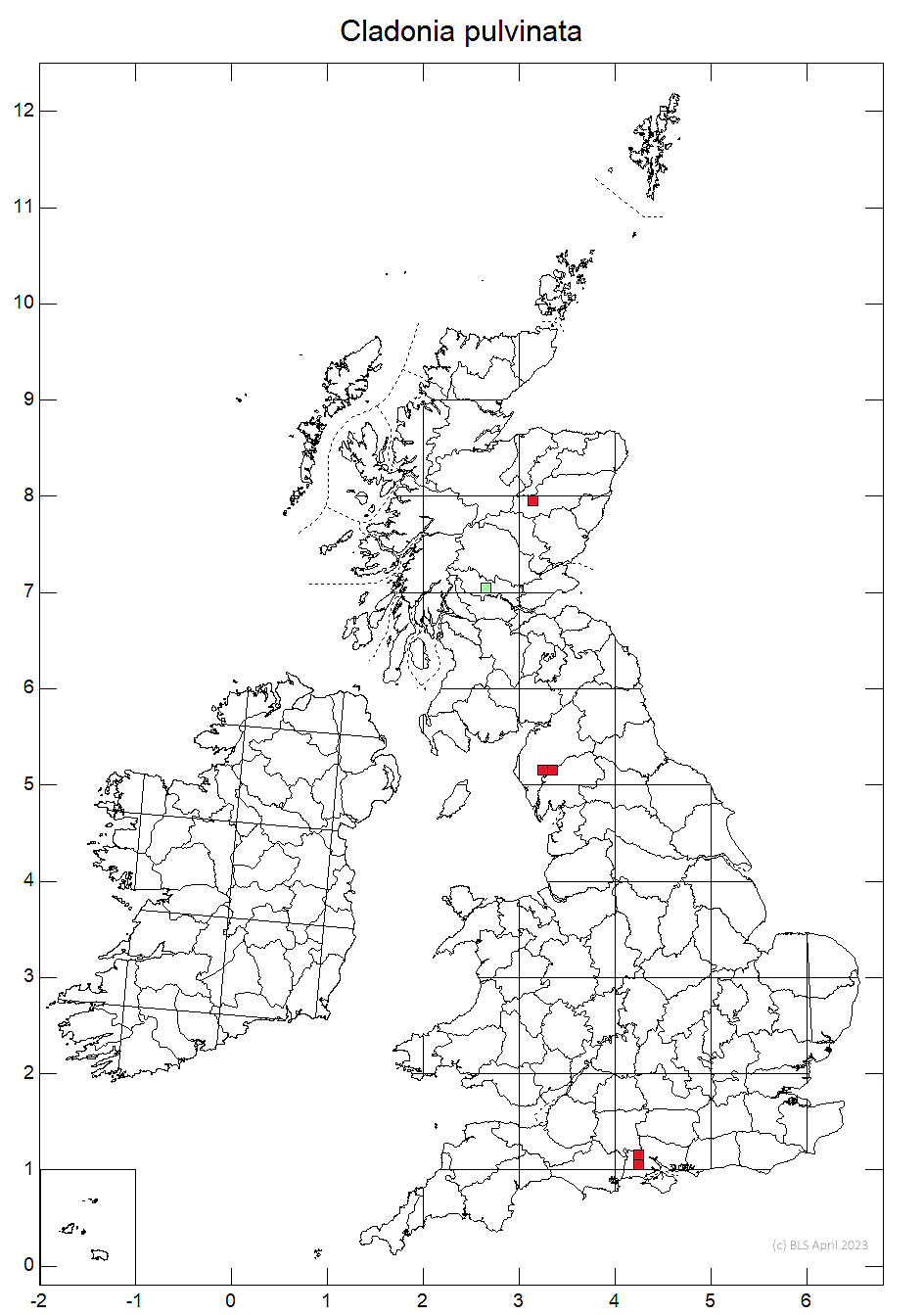Cladonia pulvinata
A rarely recorded Stacking Cup Cladonia, resembling Cladonia cervicornis and C. verticillata, but most similar to the latter, with which it shares the more rounded basal squamules with white undersides. In contrast to C. verticillata, generally however, the podetia are rare, more gracile when they occur and usually with only up to two tiers of proliferations at a maximum. It also has browner squamules that often remain dominant. In the Italian sites for this Cladonia it is only known as sterile squamule mats. Much larger material has been found in upland situations in Britain, however, and this can be multi-tiered and lack basal squamules. The Pd+ yellow spot test (psoromic acid) is distinctive, but the difficulty is spotting likely material to test. Probably overlooked in Britain, with only well developed material with podetia recorded, but still quite likely to be rare. Mainly recorded from species rich lichen heaths in the rest of Europe.
Most similar in morphological terms to Cladonia verticillata, but with a different chemistry, containing psoromic rather than fumarprotocetraric acid. It is further characterised by the basal squamules, which are rounded and broad, ± vertical amen recurved, when dry, or flattened and densely over lapping, when damp, shallowly incised and browner (greenish-brown and somewhat bronzed), some specimens show pruina at the tips of the squamules, while the underside of the squamules are white and tomentose. In lowland situations seen as squamule mats rarely with with slender podetia, which also can proliferate from the centre, but much less often and then only to a maximum of two tiers. Much larger material lacking basal squamules and with multiple tiers can occur in the uplands. Thallus C–, K–, KC–, Pd+ yellow, UV– (Psoromic and conpsoromic acids, with fumarprotocetraric acid occasionally reported in European material).
Potentially much overlooked as sterile squamule mats, see ITALIC 6.0 for pictures of well developed examples of these. The Pd+ yellow reaction is a definitive feature but spotting thalli to test is problematic. When damp the densely overlapping greenish-brown and somewhat bronzed rounded squamules can be spotted with experience. When dry the white pruinose undersides of the squamules resemble those of Cladonia callosa, but this is Pd– and UV+ strongly blue-violet (grayanic acid). Very well developed upland material can resemble Cladonia phyllophora, with similar subarachnoid surfaces between the areolae and black bases in mature podetia, but is separated by the Pd + yellow reaction and by proliferating more from the centre of the cups.
On soil in heathland, mine spoil and native pinewood.

Rarely reported and probably under-recorded, but recorded from the New Forest, the Marches, N. England, central Wales & Scotland.
Not evaluated and currently would appear data deficient.
Gheza, G, Nascimbene, J., Mayrhofer, H., Barcella, M. & Assini, S. (2018) Two Cladonia species new to Italy from dry habitats in the Po Plain. Herzogia 31: 293 –303
Pino-Bodas, R., Sanderson, N., Cannon, P., Aptroot, A., Coppins, B., Orange, A. & Simkin, J. (2021). Lecanorales: Cladoniaceae, including the genera Cladonia, Pilophorus and Pycnothelia. Revisions of British and Irish Lichens19: 1-45. Link
Van Herk, C.M. & Aptroot, A. (2003). A new status for the Western European taxa of the Cladonia cervicornis group. Bibliotheca Lichenologica 86: 193–203. Link
Text by Neil A Sanderson, based Pino-Bodas et al (2021)
